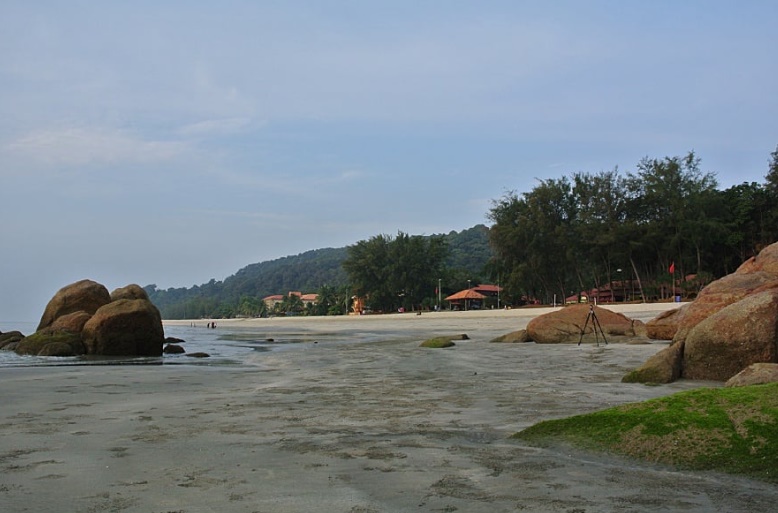
TUCKED away on Malaysia's vibrant East Coast, Teluk Cempedak unfurls like a scroll of golden sand edged by the deep blue of the South China Sea. This beloved spot, merely a stone's throw from Kuantan, offers more than a picturesque seascape. It's a canvas where nature's elements blend seamlessly with human touch, creating a symphony of experiences for every wanderer.
WHISPERS OF WAVES AND WONDERS
At Teluk Cempedak, the sea doesn't just kiss the shore; it weaves tales of ancient voyages and modern-day adventures. The beach's embrace is wide, welcoming families seeking sun-kissed memories, surfers chasing the perfect wave, and solitude seekers meditating to the rhythm of the tides. Here, the horizon is not just a boundary but a promise of endless possibilities.
THE GREEN GUARDIANS
Behind the beach, nature stands tall and proud. The rainforest, with its canopy of green, guards the coastline like an old, wise sentinel. Trails snake through this emerald enclave, inviting the curious to explore its hidden nooks. Each step unveils a layer of biodiversity, from the whispering leaves to the creatures that call it home. It's a reminder that in Teluk Cempedak, one doesn't just walk on the beach but walks through the heart of nature itself.
A NIGHT UNDER THE STARS
As daylight fades, Teluk Cempedak doesn't sleep; it simply changes rhythm. The night brings its own magic, with the moonlight painting the waves silver and the stars playing peek-a-boo through the foliage. The beach becomes a stage for intimate concerts, where the soundtrack is the symphony of the sea and the laughter of friends. It's a time when the day's warmth lingers in the cool night air, inviting conversations, reflections, and dreams.
THE CALL TO PRESERVE
Amidst its beauty, Teluk Cempedak carries a message of conservation. It stands as a testament to the delicate balance between nature and human enjoyment. Efforts to protect its pristine condition are woven into the fabric of the community, a collective pledge to ensure that this jewel of Pahang remains vibrant for future generations to discover.
Source - NST



